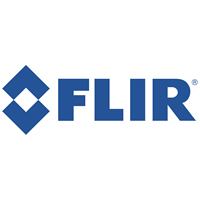Type Public CFO Amit Singhi | Founded 1978 | |
 | ||
Traded as NASDAQ: FLIR
S&P 500 Component Industry Imaging technology, defense, security, law enforcement, thermography Key people Andrew C. Teich
President & (CEO)
Amit Singhi (CFO) Products Thermal imaging, infrared Stock price FLIR (NASDAQ) US$ 36.20 -0.24 (-0.66%)10 Mar, 4:00 PM GMT-5 - Disclaimer Headquarters Wilsonville, Oregon, United States CEO Andrew C Teich (19 May 2013–) Subsidiaries Lorex Technology Inc, Indigo Systems Corporation Profiles | ||
Company profile flir systems inc nasdaq flir
FLIR Systems is the world's largest commercial company specializing in the design and production of thermal imaging cameras, components and imaging sensors. Based in Wilsonville, Oregon, United States, and founded in 1978. The company makes thermal cameras and components for a wide variety of commercial and government applications. FLIR is a component of the S&P 500 index with annual revenues in excess of $1.5 billion annually as of 2014. In the spring of 2013, Andrew C. Teich became FLIR's chief executive officer and president after the retirement of Earl Lewis. FLIR employs 2,741 people worldwide.
Contents
- Company profile flir systems inc nasdaq flir
- Exhibitor comments flir systems helitech international
- History
- Operations
- References
Exhibitor comments flir systems helitech international
History
FLIR took its name from the acronym for forward-looking Infrared. The company began in 1978 with airborne IR systems, and developed from 1978 to 2004 through product development and acquisitions of related companies. Originally based in Tigard, Oregon, the company relocated to Portland in the mid-1990s. FLIR teamed up with Hughes Aircraft Company in 1990, with Hughes taking part ownership of FLIR.
The company became publicly traded in a June 1993 IPO which raised $11.5 million for the company with shares offered at $12.50. In 1994, the company had grown to sales of $47 million annually. The next year, J. Kenneth Stringer III was named as president of the company. The company bought Sweden's Agema Infrared System in 1997, which doubled the size of the company. Acquisitions continued the following year when they purchased Inframetrics Inc. of Massachusetts for $48 million.
The company's president and chief executive officer Kenneth Stringer III was fired by the board of directors in May 2000 due to errors in the company's accounting practices. In September 2002, the Securities and Exchange Commission (SEC) sued FLIR over accounting irregularities. The next year, three executives at the company were charged with fraudulent accounting related to the SEC case that included claims of inflated sales. Sales at FLIR grew to $311 million in fiscal year 2003. In 2004, the company bought a building in Wilsonville from Mentor Graphics for $10.3 million for use as a new headquarters.
In 2003, FLIR acquired Indigo Systems, a leading developer and supplier of a wide range of infrared imaging products, including cooled and uncooled infrared detectors, camera cores, and finished cameras.
Beginning in 2005, the company began supplying BMW with imaging technology for use on the luxury automaker's vehicles. Also in 2005, FLIR was named the 55th fastest-growing company on CNNMoney's list of the 100 fastest-growing tech companies. In 2006, FLIR was listed as the 83rd best small business by Forbes. The previous year they were ranked 39th. That July, FLIR announced a seven-year contract worth up to $250 million with the United States Army for cameras to be installed on helicopters.
In March 2007, the company reported that it would restate its financial statements for the period from 1995 to 2005, primarily to record non-cash charges for compensation expense relating to past stock option grants. FLIR was also sued by investors over these same allegations.
The company purchased Extech Instruments Corp. in October 2007 for $40 million. The next month FLIR executed its third stock split. FLIR made another acquisition in April 2008 when it purchased Ifara Tecnologias of Spain for about $11 million. For the 2008 fiscal year, the company recorded $1.1 billion in sales, a record for the company. On January 1, 2009, FLIR was added to the S&P 500 stock index, replacing National City Corporation. FLIR was named as the Northwest's top company by the Seattle Times in 2009, the third time the company was at the top (2002 and 2003). It sold Extech Data Systems, a division of Extech which made portable printers, in December 2009, and bought the security hardware maker Directed Perception that month for $20 million. FLIR continued to grow via acquisitions when it purchased bankrupt Raymarine in May 2010 for $180 million. On November 30, 2015 FLIR announced that it had acquired DVTEL, Inc, a leader in software and hardware technologies for advanced video surveillance, for approximately $92 million in cash.
In December 2016, FLIR acquired Prox Dynamics, the makers of the Black Hornet, a nano-drone used by the military and law enforcement for surveillance and reconnaissance, for $134 million.
Operations
Headquartered in Wilsonville, Oregon, the company also has manufacturing and R&D facilities in Goleta (near Santa Barbara, California), North Billerica (a suburb of Boston, Massachusetts), Tel Aviv (Israel), Bozeman (Montana), Stillwater (Oklahoma), Freeport (Pennsylvania), Oak Ridge (Tennessee), West Lafayette (Indiana), Tallinn (Estonia), Täby (Sweden), Fareham (UK) and West Malling (UK). Worldwide, FLIR employs in excess of 2,700 people, with more than 1,600 located in the United States.
The company is structured to focus on six specific business segments. The Surveillance group addresses high-end military and other governmental thermal imaging markets. The Instruments segment produces thermography cameras for building inspection, predictive maintenance, and R&D, as well as test and measurement tools. Development of OEM camera cores and components, new technologies, and new applications for existing technologies are served by the OEM & Emerging Markets group. Marine electronics including thermal cameras under both the FLIR and Raymarine brands fall under the Maritime segment. Thermal and visible light cameras for industrial, commercial, and residential security are serviced under the Lorex by FLIR brands by the Security segment. The Detection segment produces sensors for chemical, biological, radiation, and explosive detection.
